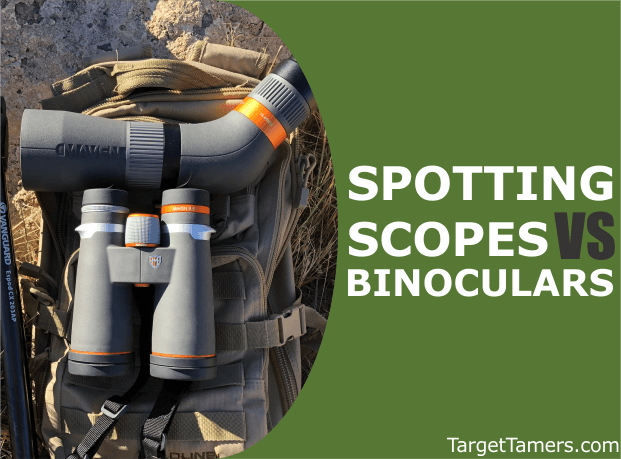
Spotting scopes are highly underrated by hunters that haven't actually used one while out in the field.
The right spotting scope in the right setting can be more important than binoculars, can be a supplement to a rifle scope, and it can work in tandem with a laser rangefinder.
High, adjustable magnification is not only an attractive benefit but a valuable one.
If you have miles to cover or want to measure your trophy before closing in, having a spotting scope can change the way you play the field. But a high-powered pair of binoculars can also present some attractive and useful benefits.
How do you choose?
Let’s scope over the main differences of spotting scopes versus binoculars and when to use them.
Spotting Scope VS Binoculars: Magnification
The most obvious difference between spotting scopes and binoculars is magnification. Binoculars typically range in magnification between 4x to 25x. Spotting scopes can start magnification as low as 11x and 15x and offer as much as 60x, 80x, and 100x.
The next difference is its ‘zoom’ ability. Binoculars are fixed power optics meaning they only offer magnification at one setting. You cannot zoom in and out to increase or decrease the amount of magnification.
Spotting scopes are adjustable power optics meaning they can zoom in and out to increase and decrease the amount of magnification.
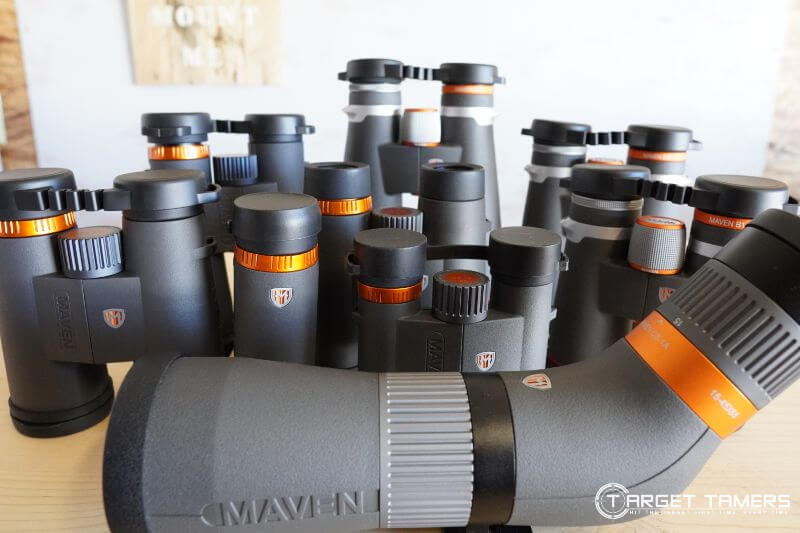
Spotting Scope VS Binoculars: Portability
Binoculars are versatile, lightweight optics that are designed to be portable and compact. The low power and handheld design promote attainable image stability. Spotting scopes are larger in size and designed to be tripod mounted for optimal image stability.
While the general rule is that binoculars are more portable and compact than spotting scopes, there are always exceptions to the rule.
Big binoculars, 15x, 18x, 20x and larger, are generally heavier than 2 lbs and designed to be tripod-mounted for the best image stability. In that sense, they present many of the same challenges as packing and using a spotting scope in the field.
Compact spotting scopes are also an exception to the rule as they can be very lightweight and smaller in size compared to big binoculars. They can also be efficiently used freehand in the field. A great example of a compact spotter is the Vortex Razor HD 11-33x50 that is 25 oz and 10.3” long.
Wearable VS Packing
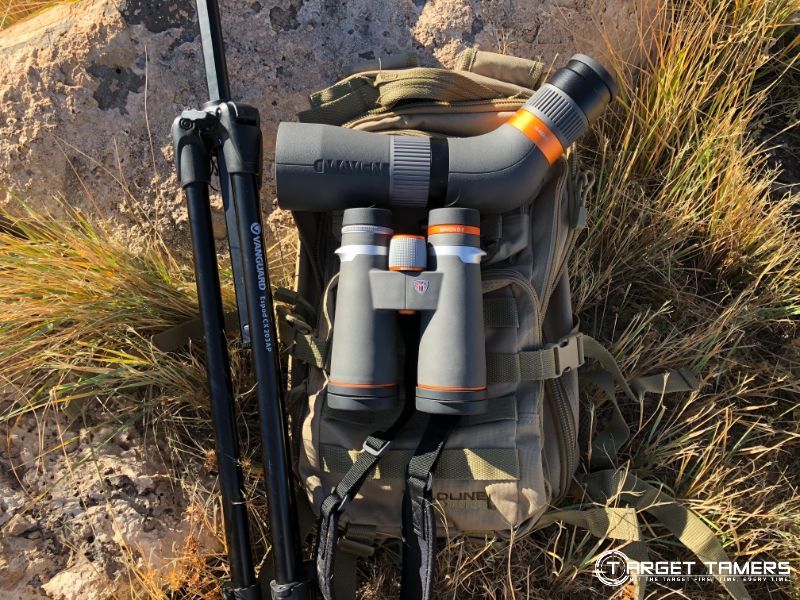
Binoculars up to 12x are wearable. They can be comfortably worn with neck straps, in vest/hunting pouches, and in a chest harness. They are always instantly ready for use as they are on your person for fast, easy access.
Big binoculars and spotting scopes that are tripod-mounted are less portable and compact making them more time consuming to use versus low-powered binoculars. First off, they require that you carry a tripod with you either in the hand or in a pack. They must be stowed into a field bag and removed and mounted before it’s ready for use.
You can circumvent the need to carry your binocular or spotting scope in a field bag by mounting it to the tripod while you hike, hunt, and stalk. This does present its own challenges by tying up one hand and the combined weight of carrying optic plus tripod for long excursions.
Spotting Scopes VS Binoculars: Applications
User preference drives the decision of whether a spotting scope or binocular is the optic of choice for any given application. No one optic does it all as no one environment is the same for various activities such as hunting, birdwatching, target shooting and more.
Hunting: Treestand, Bow Hunting, Calling
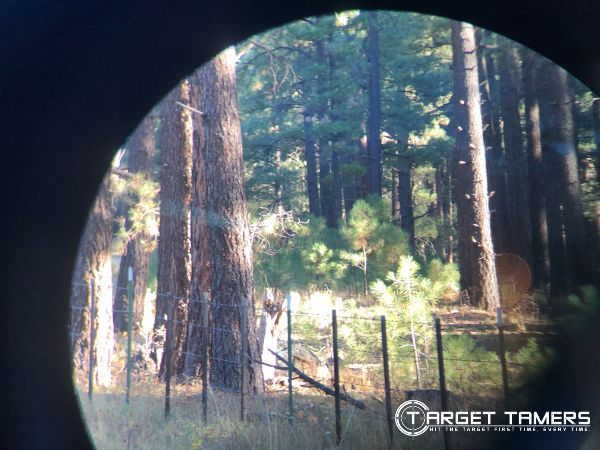
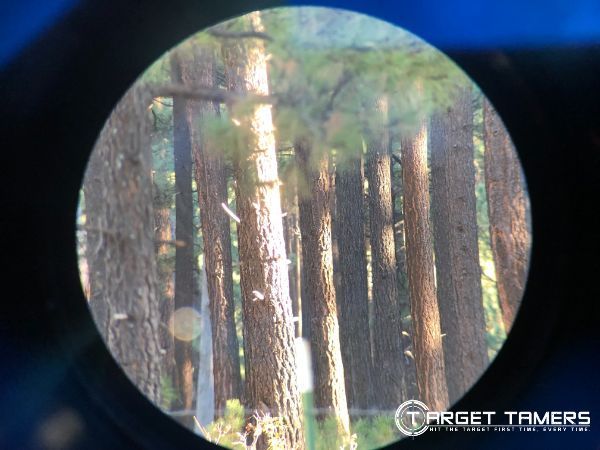
Thick timber, limited visibility, and the limited space of a treestand and blind calls for the use of low powered binoculars in the 6x, 7x, 8x, and 10x range. While some may dismiss the need for magnification, you can’t underestimate the power of binoculars to identify the telltale behind of a white tail amongst the brush or the twitching rack of a bedded buck.
High power from either binoculars or spotting scopes will narrow the field of view and add bulk and weight that you just won’t need in dense vegetated country.
Winner: Binoculars
Hunting: Open Country, Spot & Stalk
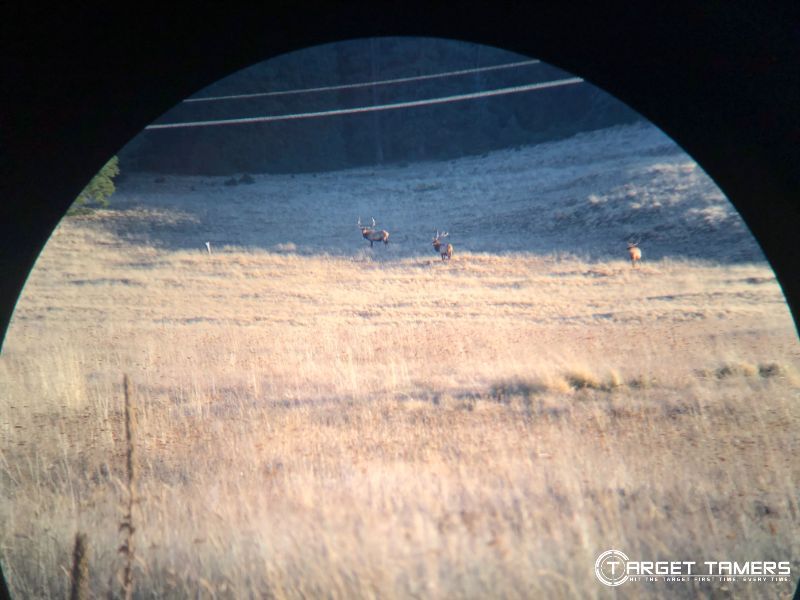
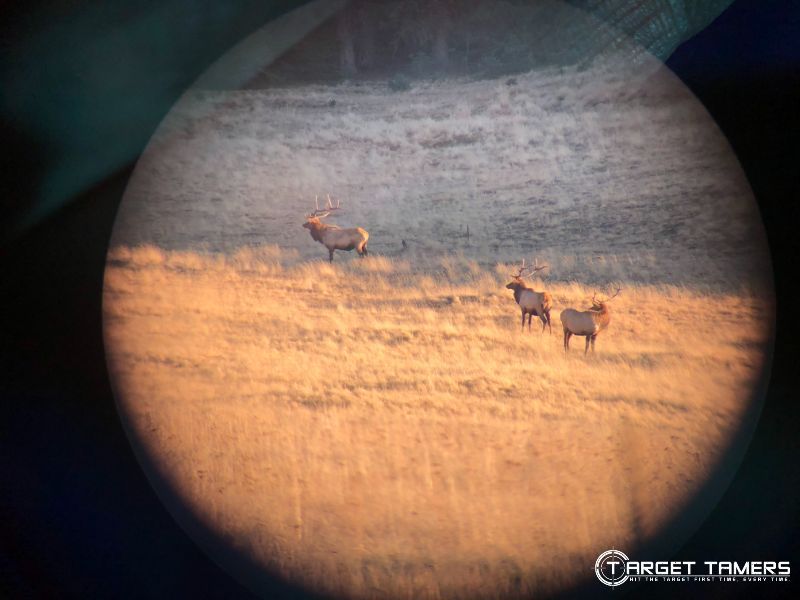
Having binoculars is a must-have but a spotting scope would be very appropriate too. A spotting scope can reach extremely long distances to save you time and stalking in areas that don’t get you any closer to the herd.
A typical scenario could be to pull out the 10x binoculars for their much wider field of view to scan and spot. Once you've found your potential tag filler, use the spotter to measure, determine how much closer you can get without being spotted, and the potential route they may take to escape.
In this case, a low powered binocular and either big binocular or spotting scope makes for a perfect combo.
Winner: Tie
Birdwatching
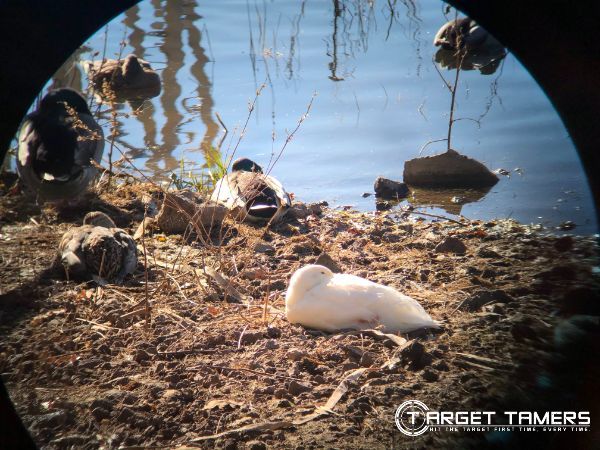
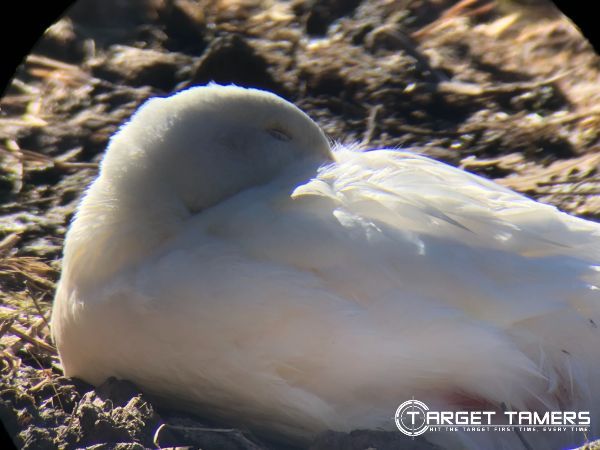
The norm for birding is to have a pair of binoculars in the 8x or 10x range. Binoculars in this power range offer wide field of views to follow moving flocks while also offering enough magnification and image stability to observe.
Many birdwatchers are walking through parks, aviaries, woods, and lakes for their hobby. Binoculars offer portability and compactness needed for this application.
However, for those who are observing from a stationary position at home or who spend long periods of time in one place at a birdwatching spot, a high-powered binocular or spotting scope can be beneficial for close-up observation and species identification. It is best to keep lower powered binoculars on hand for faster use or when birds are in flight.
Winner: Binoculars
Target Range
Spotting scopes line the target range to spot groupings on paper to avoid walking to the target after every shot. Desired for their high magnification, they make the ideal partner for a rifle scope at the range.
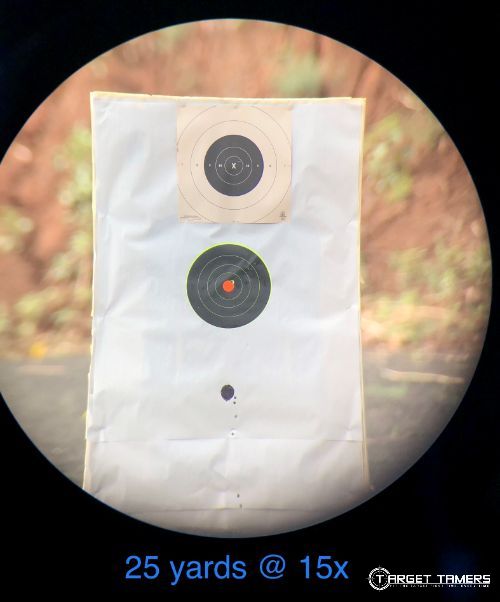
Binoculars can offer some advantage up to about 100 yards, but a spotting scope would be needed for distances beyond that.
Winner: Spotting Scope
Events & Concerts
To observe sports games, parades, and concerts, binoculars with 7x, 8x, and 10x magnification would serve the purpose appropriately. Fields of view are wide making it easy to follow moving acts, and magnification allows you to see closer, over crowds, and stage or float details.
However, it all depends on what you are observing and where you are. If you’re observing ocean sports from a fixed, high position or whale watching from the shore, a spotting scope will be your high-power friend in these applications.
Winner: Tie
Astronomy
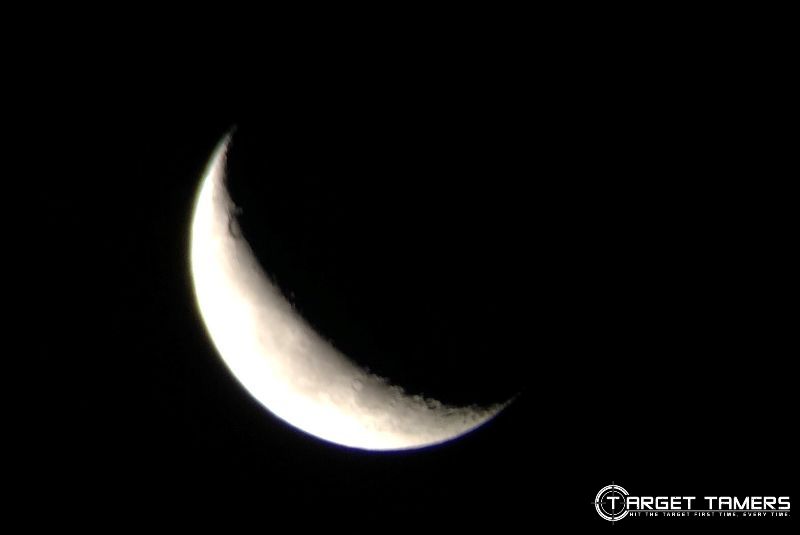
There are big binoculars with magnification larger than 20x and objective lenses as large as 60mm and 70mm made for amateur astronomy. These start to compete with spotting scopes of 20-60x and 60mm lenses.
Spotting scopes obviously have the advantage of having adjustable zoom. The lower powers allow for a wider field of view to find the target and the higher power to get a closer look.
However, to observe more than lunar features like planets, moons, rings, galaxies, and more, much higher magnification and larger objectives are mandatory. To capture any celestial targets on camera, a telescope, specialized camera software, and mounting systems are required.
Between binoculars and spotting scopes for amateur astronomy observation, spotting scopes have the upper hand.
Winner: Spotting Scope
Spotting Scope VS Big Binoculars: Optics Combinations
Many hunters tend to sit on one side of the fence when it comes to spotting scopes and binoculars. But, why not have the best of each world and have both?
Optimizing your hunt means maximizing your optical strengths. In other words, don't limit yourself if you can conveniently use them both. You'll need to evaluate your hunting style and terrain conditions to come up with the combo that suits you best.
Big Binoculars + Binoculars
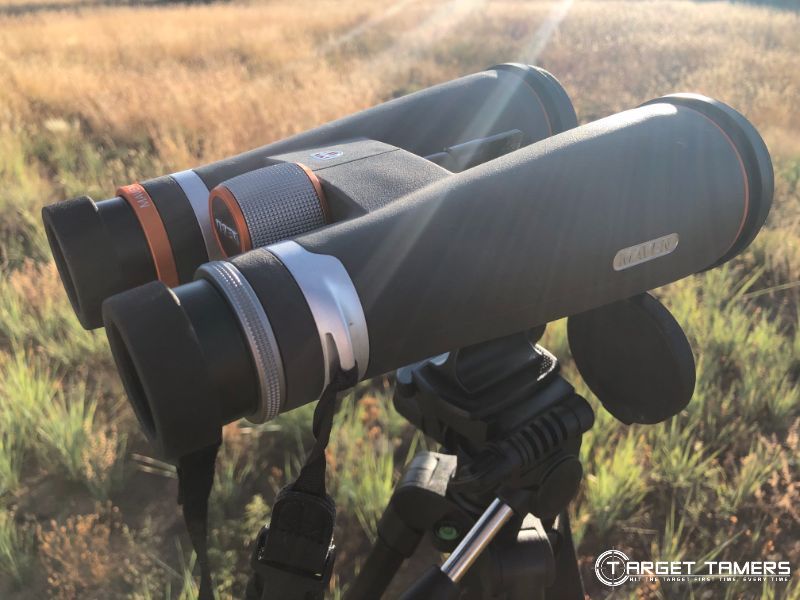
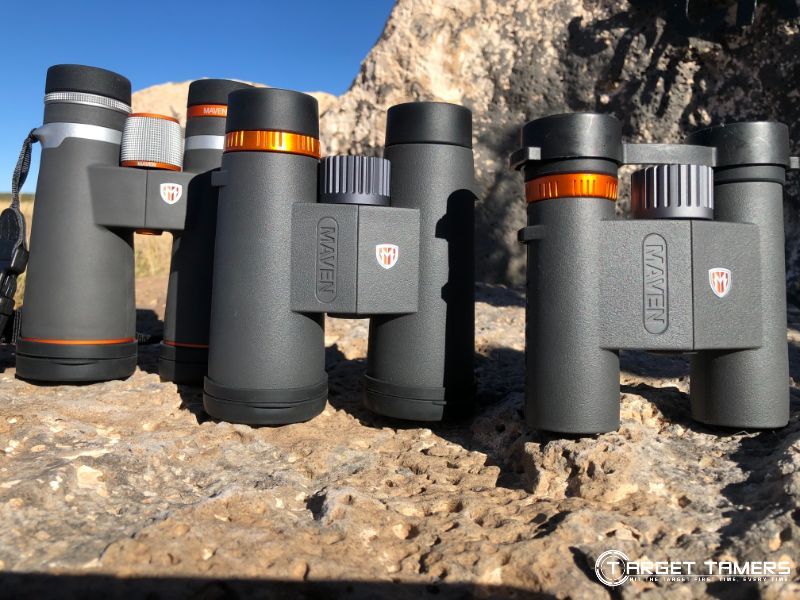
For those who just aren’t spotting scope people, you can still go big and reap the benefits. Wearing 18x binoculars around your neck is asking for pains and aches. Wear some 10s on your chest and mount the 15x or 18x to a tripod.
Benefits of Binoculars:
- Both high and low power optics
- Wide fields of view
- Could possibly be saving on weight versus full-size spotting scope
- Binocular vision for extended glassing sessions
Drawbacks of Binoculars:
- Limited to fixed power
Spotting Scope + Binoculars
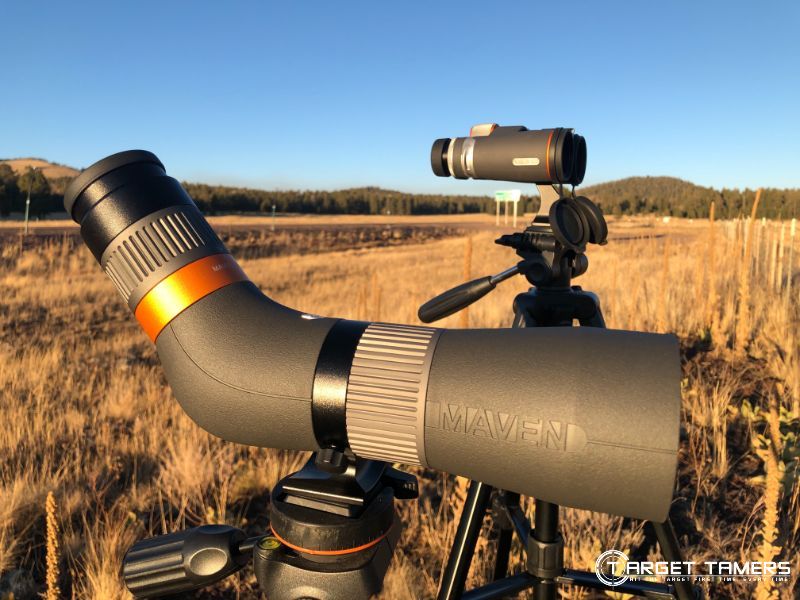
The extra weight and bulk of a spotting scope is worth it to many especially when it’s quality glass. That extra crispness and clarity can fill the gap that fixed power binoculars can’t offer. Having a tripod is a necessity to make the most of having a spotting scope, but the benefits of having a high-powered spotter and a 10x42 around your neck speaks for itself.
Spotting Scope & Binocular Benefits:
- Both high and low power optics
- Adjustable and high magnification
- Long-range glassing
- Identify, gather data, measure scores
Spotting Scope & Binocular Drawbacks:
- Atmospheric conditions e.g., mirage
- Tight eyebox and lose light at high power
- Extended glassing of monocular can cause eye strain and fatigue
- Not all applications suitable to use of a spotting scope
Spotting Scope VS Binoculars: Glass
It may be less about whether a spotting scope or big binocular is the optic of choice as the glass may make the decision for you. Enter here: budget.
Higher quality binoculars will always outdo a budget spotting scope regardless of the magnification. A high-quality spotting scope will be a must-have over a 10x binocular when measuring B&Cs from quite the distance.
Your budget will determine what you can afford. Some key features to look for include:
- ED (Extra-low Dispersion glass)
Fluorite glass - Prism coatings (Roof prism binoculars)
- Dual focus (Spotting Scope)
- Smooth focus
- Long eye relief
- Full weatherproof protection
- Accessories i.e., tripod, binocular harness, etc.
Brands such as Swarovski and Leica will cost the most, but they offer above industry standard quality. You can acquire high-quality optics for reasonable prices from manufacturers like Maven, Vortex, Meopta, and Leupold.
Spending around $1000 on a spotting scope is highly recommended for the best optical and mechanical integrity. $1000-$2500 is the realistic budget for 15x, 18x big, high-end binoculars that you intend to use over a spotting scope.
Fortunately, there’s a wide spotting scope budget range to choose from and multiple binocular budgets that can make everyone happy.
If you are stuck deciding what your budget should be, check out our Cheap VS Expensive Binoculars article for a breakdown in the key differences budget will make. Much of the information in this article is also relatable to spotting scopes.
7 Reasons to Choose a Spotting Scope Over Binoculars
1. Zoom Power
Yes, binoculars have zoom power too, but show me a revered brand that makes zoom powered binoculars and you'll find yourself in the dark. The standard for binoculars is fixed magnification.
Binoculars are technically two individual, mini telescopes that are mechanically impossible to be on the exact same power range to maintain perfect synchronization because of moving parts that need to be in the exact same place.
Due to the commonly used linking bands in the industry that connects each zoom mechanism of both binocular barrels, there's always going to be some lag and slop to each side. The result: they will never really be on the same magnification level as you expect them to be.
Since a spotting scope is just a high-powered monocular, you will not have this issue. Having adjustable zoom power is a major advantage a spotting scope provides.
2. Long-Distance Glassing
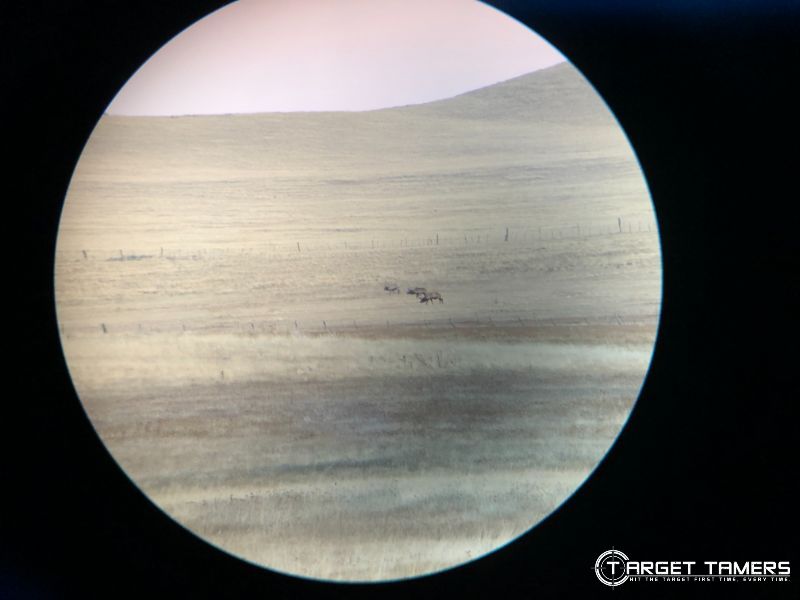
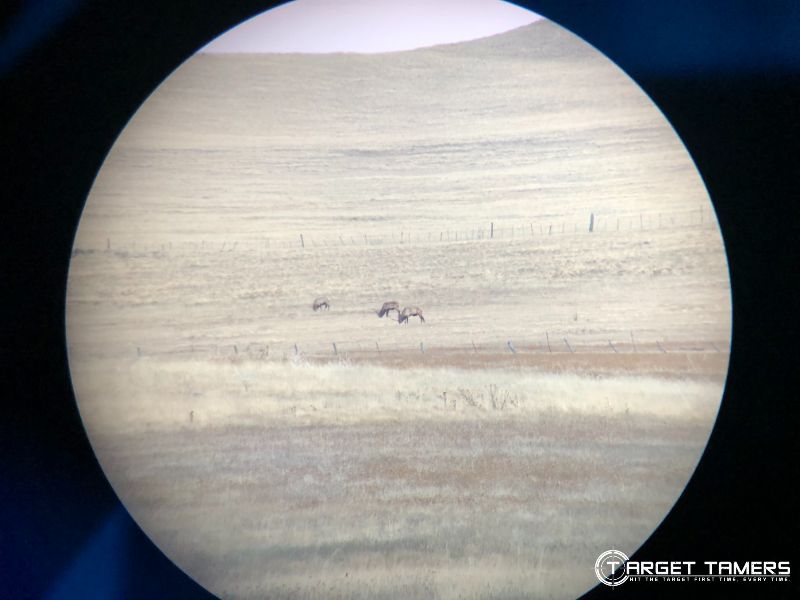
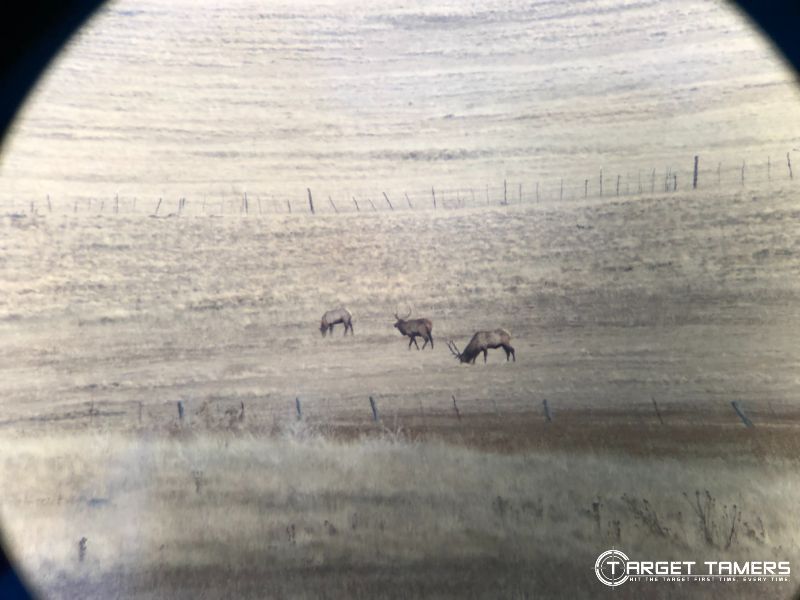
Spotting scope magnification levels generally start where binoculars leave off. This is what makes spotting scopes excellent tools for long-distance glassing, species identification, and high-powered observation.
Yes, you might be able to see the herd from a mile away with your binoculars, but to be able to discern elk from black blobs, count points, or predict potential escape routes, you'll need a spotting scope.
Since both an 18x binocular and spotting scope needs to be tripod mounted, you at least have the benefit of having adjustable zoom with the spotter.
3. When it’s Not Safe to Approach
Let's face it, hunting, birding, and nature-observing wouldn't be as fun if wildlife just sat there as you approached it, and it's far from the reality.
Ground hogs can hear you coming from over 70 yards away, deer will disappear in graceful panic within seconds, and most importantly, a grizzly can be on top of you before you even have a chance to pull out the .375 H&H.
With a spotting scope, you can get that much closer without physically putting yourself in danger of injury or fatality and without giving your position away.
Just remember, that with such high magnification levels, you can be fooled into thinking you can take the shot when conditions aren't right or if you don't have the appropriate equipment.
Just as important as it is to have a quality spotting scope, you need to have a just as good or better rifle scope and the right rifle and caliber to do it effectively and ethically.
4. Quit Walking to the Target
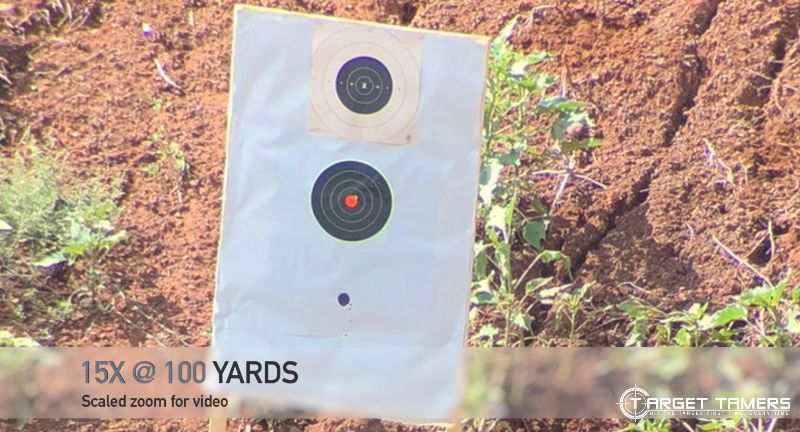
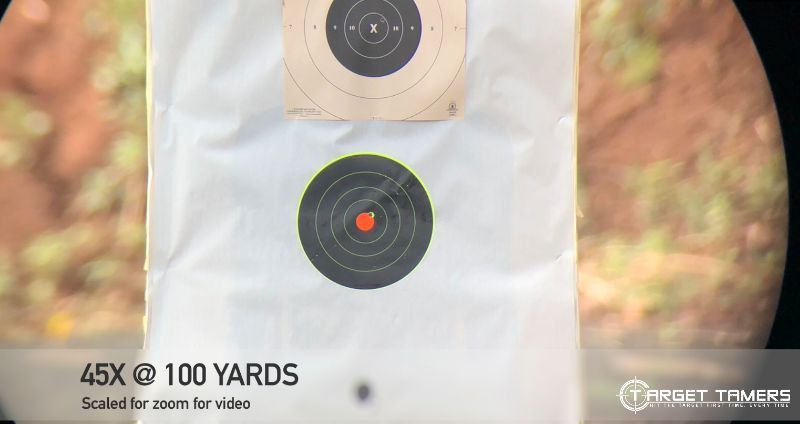
At the range, there's nothing more tedious, time-consuming, and inefficient as when you must walk to the target after every round. At a supervised range, you can’t walk to the target until cease-fires anyway.
What to do? Get a spotting scope to make target practice or sighting-in your scope a more productive experience.
Binoculars don’t offer the power you need to confirm .30 caliber impacts on white at 200 yards plus, or even groupings at 100 yards with the favorite 10x42 platform. If your rifle scope can’t discern groupings for you, a spotting scope is a must-have for the range.
5. Portability
Optics manufacturers are coming out with convenient ways for you to lug around your spotting scope. You can attach it to shoulder straps to be easily toted and mounted in a matter of seconds.
But the fact that you need to take a tripod, an extra piece of gear, limits portability and adds weight. However, this is also true of big binoculars as they are in their prime when tripod mounted. In the scenario of big binoculars versus spotting scopes for portability, user preference is the drive here.
You can still opt for a compact, well-balanced spotting scope. Mount it when you have the time to sit and glass or use it freehand on minimal power for fast glassing.
A word about tripods: legs should be adjustable, feet should be non-slip, and tripods should be lightweight but heavy enough to remain sturdy in the wind.
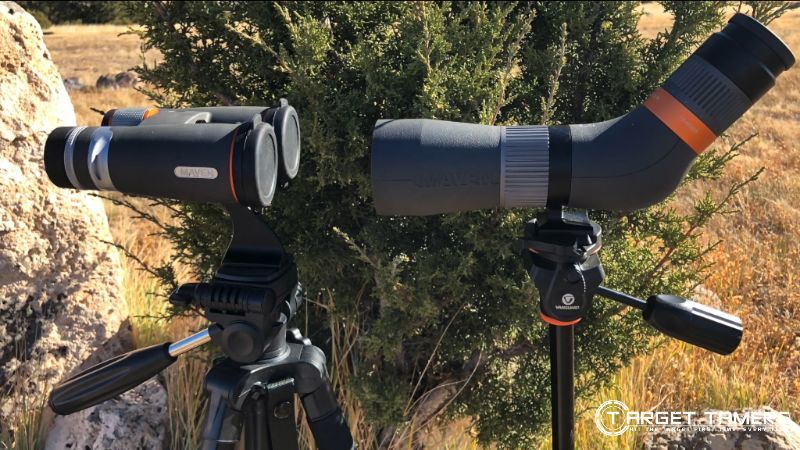
6. Compactness
There are some compact spotting scopes that are excellent alternatives to high powered binoculars. They're about as small and lightweight as a pair of standard binoculars but with the high magnification of a spotting scope.
This is a huge benefit for hunters that are constantly on the go when all they need is a quick scan for target acquisition, hone in for some detail gathering, and then move on closer to set up for a shot.
If you're worried about weight, mobility, and the ease of use of spotting scopes, they're legitimate concerns but they’ve come a long way to minimize those problems.
7. Low Light
Thanks to the much larger objective lenses of spotting scopes over binoculars, you can collect as much light as possible when you really need it most. Adjust the magnification to the lowest power possible (E.g., 11x, 15x, or 20x) to maintain image integrity while reaping in high light transmittance during low light hours.
If it has quality glass and coatings to enhance light transmission, a spotting scope can help you to see clearer, brighter images with sharpness that is difficult for many optics to maintain at low light. When binoculars end, spotting scopes are just beginning.
The Bottom Line: Spotting Scopes or Binoculars?
Spotting scopes can be of great import to be able to determine target stats, glass long-range, and spot groupings.
Binoculars have wide fields of view to scan, can be used in most all applications, and are extremely portable.
But you don't have to be on just one side of the fence when you can have both. The advantages complement each other, but if user preference puts the foot down on the spotting scope, consider a big binocular for similar advantages.
The point is, there is no bottom line. You have options. You decide.
Further Reading
- Maven S.3A 20-40X67 Spotting Scope Review – Hands-On Field Test!
- Nocs Provisions 8x25 Binocular Review: Field-Tested & Expert Approved
- Maven B.7 8x25 Binocular Review & Field Test [HANDS ON]
- Maven B.2 11x45 Binocular Review [Hands On - Field Tested]
- Vortex Crossfire HD 10x50 Binoculars Review [HANDS ON]




